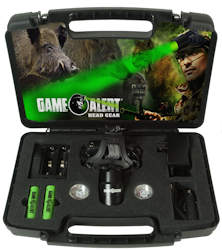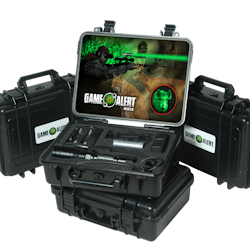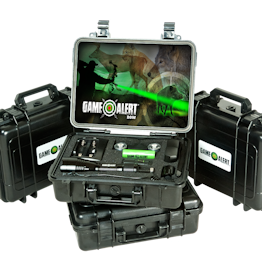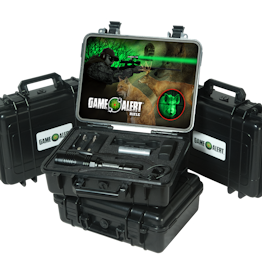Protect yourself from wild hog disease
Exercise caution in handling wild hogs.

About Wild Hogs
(Wild / Feral Pigs, Boars & Swine)
Wild hogs are the descendants of Eurasian
wild boar and released or escaped
domestic hogs. Today, more than 4 million
wild hogs are found in at least 35 states.
Wild hogs destroy farmland and crops,
compete with native wildlife for food, and
can spread disease to other animals and
people. Hunting wild hogs is a popular sport
among hunters, as well as a population
control method supported by wildlife
agencies.
Wild Hogs & Disease
There are more than 24 diseases that
people can get from wild hogs. Most of
these diseases make people sick when
they eat undercooked meat.
Brucellosis is different–
The germs that cause brucellosis are
spread among hogs through birthing fluids
and semen. Infected hogs carry the germs
for life. People may get the germs through
contact with an infected hog’s blood, fluids,
or tissues (such as muscles, testicles, liver
or other organs).
You May Be At Risk For
Brucellosis
You can get sick if blood, fluid, or tissue
of an infected hog comes in contact with
your eyes, nose, mouth, or a skin cut.
You and your family can get sick when
field dressing an infected hog.
You and your family can get sick when
butchering or eating undercooked meat.
You may start to feel sick a week to
months after coming into contact with
germs that cause brucellosis.
Brucellosis Symptoms
Fever Low appetite
Chills Fatigue
Sweating Joint pain
Headache Muscle pain
Do You Think You Have
Brucellosis?
Diagnosis:
If you have these symptoms and are at
risk, see your doctor immediately. Blood
tests can check for brucellosis.
Treatment:
Antibiotics are drugs that can kill the
germs that cause brucellosis, and
should be taken for 6 weeks or longer.
Take all of the antibiotics as prescribed
by your doctor to prevent the illness from
coming back.
If the illness comes back or is not
treated, you could have serious problems
in your bones, joints, or heart. Rarely,
brucellosis is fatal.
How to Protect Yourself
Safe Field Dressing
Avoid all contact with visibly ill animals or
those found dead.
Use clean, sharp knives for field dressing
and butchering.
Wear eye protection and rubber or latex
gloves (disposable or reusable) when
handling carcasses.
Avoid direct contact (bare skin) with fluid
or organs from the hog.
Burn or bury disposable gloves and
inedible parts of the carcass after
butchering.
Wash hands as soon as possible with
soap and warm water for 20 seconds or
more and dry hands with a clean cloth.
Clean all tools and reusable gloves used
in field dressing and butchering with a
disinfectant—such as dilute bleach.
(Read the safety instructions on the label)
Food Safety Tips
Wash hands often with soap and warm
water for 20 seconds or more.
Clean surfaces often with hot, soapy
water.
Separate raw pork from cooked pork
and other foods.
Cook pork to an internal temperature of
160° F using a food thermometer.
Chill raw and cooked pork promptly.
For more information on Food Safety, visit:
www.foodsafety.gov













